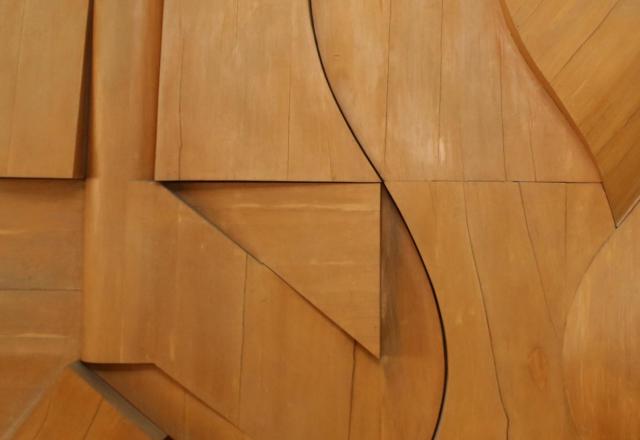The art collection of the Hebrew University includes more than 2,000 works in a variety of media: oil paintings, drawings and water colors, ceramic reliefs, sculptures and ornaments, to name just a few. The art works are displayed across five campuses of the University and enrich the aesthetic experience of students, academic and administrative staff and visitors. Most of the works are in public spaces on the campuses while others are displayed in management offices or preserved in art warehouses.
The collection consists largely of Israeli and international art works of the twentieth century. In addition, the University holds closed collections such as the Jewish art collection named after Mark & Luba Uveeler, which is displayed in the main library at Mt. Scopus, and a collection of prints of the twelve tribes of Israel by Salvador Dali, shown at Beit Maiersdorf.
The art collection of the Hebrew University was compiled thanks to the generous contributions of artists and collectors, and the inheritance of those who have honored the Hebrew University.
History
The Hebrew University has received art works since its early days, prior to the establishment of the State of Israel. Evidence of acquisitions and donations date back at least until 1929, including a collection of photographs from the British Museum and the Berlin Museum, featuring Islamic art.
Correspondence from 1934 between the Secretariat of the University and the Bezalel Museum shows the University had received a number of oil paintings. In 1935, the University started displaying its art collection and in 1938 the Students Club hosted three exhibitions, including reproductions of Monet, Manet and Degas, and pieces by Cezanne and Gauguin.
Dr. David Werner Senator, the administrative director of the Hebrew University at the time, wrote to Dr. Erich Brauer, who had arranged the exhibition: "It is my hope that exhibitions such as these will become a permanent feature at the University, and that we will achieve our dual goal, providing an opportunity for people in the University to view art and at the same time bringing the students to actively participate in public University activities." (June 22, 1938, Hebrew University archives).
Since the times of Senator and Brauer, the artistic activity at the University has developed apace. The art collection has expanded and unique items have been added over the years. For example, in 1957-58 a sculpture by Henry Moore, Draped Seated Woman, was placed on the Edmond J. Safra campus. In 1961, an abstract construction by David Palombo was placed on the campus at Mt. Scopus. And in 1976 the University received Reflective Wall number 5 by Yigael Tumarkin.
In recent years, we have placed a sculpture by Sigalit Landau, Stranded on a Water Melon in the Dead Sea, (2005-2009), donated in memory of her mother. The family of the sculptor Avraham Ofek offered the University his sculpture "Untitled" (1987) as a long-term loan. The Israel Museum also lends works from its collection to the University, which are displayed around its campuses.
You can read more about these and other artworks in Campus Art.
Galleries and exhibition venues featuring art around the University have also been established over the years. The Stern Little Gallery was inaugurated in 2000 and since it has hosted temporary art exhibitions. Corners and other spaces are increasingly used to display permanent and temporary exhibitions on the combination between academy and arts.
Over the years, and with the development of the art collection, a need was raised to establish a body that will deal with all art affairs at the University. The idea to appoint a curator was first proposed in 1973 by Prof. Bezalel Narkiss, and that same year an Artifact Committee chaired by Bernard Cherrick was established.
In May 1974, the Committee appointed Dr. Naftali Deutsch as the first curator of the Hebrew University. Deutsch was replaced by Ruth Apter-Gabriel for one year, from 1976 to 1977. In 1982 Ahuva Passow-Whitman took office and filled the role for about 30 years. Since 2011, the University's Curator is Michal Mor.
In 2015 the site of the University Art has been launched by the content meneger of the site, Daniel De-Shalit.
Application procedures for donating or loaning art works to the University
Donors or lenders offering an art work to the University are asked to contact the University's Curator. The application should include a description and a photograph of the proposed artwork together with the artist's CV and a list of exhibits.
Requests are being carefully considered under an orderly procedure and are approved or rejected based on University's considerations.
The procedure is as follows:
1. The University management looks into a donation request and checks its context
2. The Artifacts Committee discusses the artistic considerations and passes on its recommendation to University management
3. The University management studies the application and makes a decision
4. If the application is accepted, the decision on where to place the artwork is made by the Programa Committee, comprised of academic staff from all campuses and senior administrative staff. It makes its decision upon consultation with the artist.















